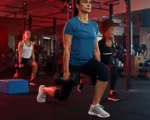When the frost sets in and the days grow shorter, many outdoor workout enthusiasts may find it harder to stay motivated. But don’t hang up your running shoes just yet! Winter is a great time to maintain your fitness, explore new workout routines, and strengthen your body through diverse activities. To help you stay active while braving the cold, we’re sharing practical tips for safe and effective winter workouts.
Why Stay Active in Winter?
The benefits of staying active throughout the winter go beyond physical fitness. Regular exercise enhances your mental and emotional well-being, aids in building resilience against the winter blues, and sets the stage for improved performance when spring rolls around. Winter workouts can also prevent repetitive stress injuries from continuous activity repetition by introducing variety into your routine.
Whether you prefer aerobic runs, power hikes, or invigorating gym sessions, maintaining a workout routine is crucial for staying strong and energized during the colder months.
Tips for Safe Outdoor Workouts in Winter
If you’re someone who loves the crisp air and snow-covered landscapes, outdoor winter workouts can be both rewarding and refreshing. Here are some expert-backed tips to keep your workouts safe and enjoyable.
Dress for Success
Proper layering is key when exercising in cold weather. Start with a moisture-wicking base layer to stay dry, followed by insulating layers for warmth. Finish with a lightweight, waterproof windbreaker to protect against rain or snow.
- Don’t forget accessories: Wear a hat or headband to conserve body heat and gloves to protect your hands. If it’s particularly chilly, consider a face mask or scarf to warm the air before it enters your lungs.
- Tip: You should feel slightly cool when starting your workout. Overdressing can lead to overheating, which increases the risk of dehydration.
Mind Your Footing
Icy roads and snow-covered trails can be dangerous, leading to slips, falls, or sprains. To stay safe:
- Use traction devices or spikes on your shoes for better grip.
- Stick to familiar routes to avoid surprises like unexpected cracks, bumps, or icy patches.
- Notify a friend or family member about your route and expected return time for added safety.
Be Visible
With the sun setting earlier in winter, visibility is often limited during morning and evening workouts. Equip yourself with reflective vests, headlamps, or clip-on lights to ensure you’re seen by others and can safely spot obstacles.
Stay Hydrated
Cold weather can mask signs of dehydration, making it easy to forget about water intake. But even in winter, your body loses fluids through sweat and breath.
- Drink water before, during, and after your workout.
- Consider hydration gels or electrolyte drinks to replace lost minerals.
Protect Your Skin
Winter sun can be surprisingly harsh, especially with UV rays reflecting off snow. Apply sunscreen to exposed skin and wear sunglasses or goggles to protect your eyes.
Indoor Alternatives When the Cold is Too Much
For those less keen on braving the winter chill, indoor workouts can offer just as much variety and effectiveness. Shift focus to activities like strength training, interval workouts, and yoga to build a stronger foundation for your spring fitness goals.
Strength Training
Strength training is integral for endurance, agility, and injury prevention. You don’t need expensive equipment or a gym membership to get started.
- Explore 20- or 30-minute bodyweight workouts on YouTube. Think squats, planks, lunges, and glute bridges during downtime at home.
- Alternatively, consider hiring a personal trainer to build a customized strength program to keep you conditioned year-round.
Try Cross-Training
Mix up your routine with indoor cycling, rowing machines, or elliptical workouts. Recreate the challenges of outdoor endurance activities with adjustable resistance and incline levels on equipment.
Short Bursts of Exercise
No time for a full workout? Micro workouts are an excellent option. Sneak in 5–10 minutes of planks, push-ups, or squats while waiting for dinner to cook or between virtual work meetings. Small efforts like these can make a big impact on your overall fitness.
Building a Winter Workout Mindset
Cold weather workouts require preparation, but they’re also an opportunity to test your resilience and shake up your fitness regime. Winter doesn’t have to slow you down—instead, it’s an ideal time to focus on well-rounded fitness. By adjusting your workouts to align with the season, you’ll not only maintain your fitness but also emerge stronger when warmer weather returns.
What are your favorite ways to stay active in the winter? Share your tips or try these ideas, and see how they transform your routine!








